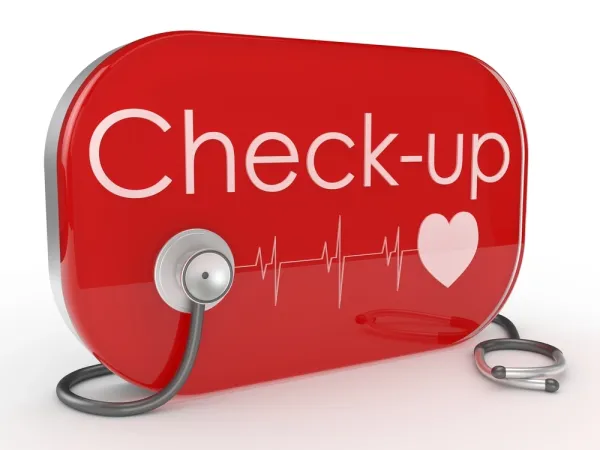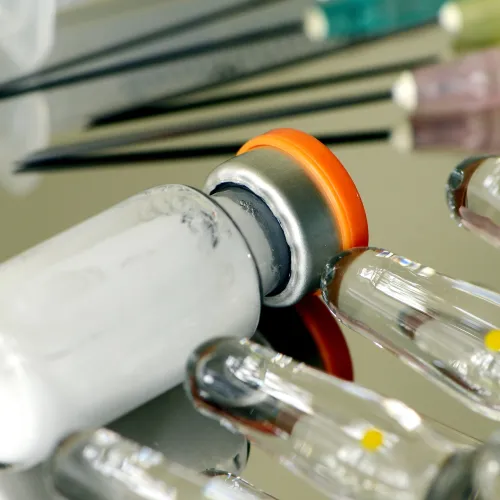Internal Medicine Coding Alert
Use Injection-E/M Smarts to Code Correctly

You’ll need modifier 25 for the E/M.
When your physician examines a patient, she might also administer an injection during the same visit.
Don’t miss out on added reimbursement by identifying the administration of the injection and reporting it separately in addition to the appropriate evaluation and management (E/M) code for the visit.
Heads up: When your clinician administers an injection other than a vaccine, you typically report the administration of the injection with the CPT® code, 96372 (Therapeutic, prophylactic, or diagnostic injection [specify substance or drug]; subcutaneous or intramuscular). When reporting 96372 for the administration of an injection during an E/M encounter, you will face bundling by Correct Coding Initiative (CCI) edits.
As the modifier indicator to the edit bundle between 96372 and most E/M codes is ‘1,’ you can overcome the edit bundle using a suitable modifier. “No modifier is ever appended to the administration code,” says Suzan (Berman) Hauptman, MPM, CPC, CEMC, CEDC, senior principal of ACE Med, a medical auditing, coding and education organization in Pittsburgh, Pa. “If the documentation supports the visit and the injection and the payer wants to see the modifier, it would get appended to the E/M service. The substance or drug would also be billed with the actual HCPCS code for the substance or drug being injected.”
“The modifier that you will have to use with the E/M code to overcome the edit bundle is 25 (Significant, separately identifiable evaluation and management service by the same physician or other qualified health care professional on the same day of the procedure or other service),” says Melody Lidmila, CPC, CEC, coding specialist at the University of Colorado Health, in Loveland.
“An exception is code 99211 (Office or other outpatient visit for the evaluation and management of an established patient…),” says Kent Moore, senior strategist for physician payment at the American Academy of Family Physicians. “CCI edits do not permit this code to be reported in addition to 96372, and the modifier indicator is “0,” which means the edit cannot be overcome with a modifier.”
You will encounter two different types of scenarios when your clinician might administer an injection during an E/M encounter. You will need to be aware of these kinds of scenarios so that you will not miss out on the extra deserved pay for the injection that was administered.
Scenario 1: Injection Due to E/M Encounter
Your physician sees a 24-year-old new female patient for complaints of high fever, vomiting, pain and burning sensation during urination, and radiating pain along the flank and back. Your clinician evaluates the patient and arrives at a diagnosis of acute pyelonephritis. He decides to administer cefazolin sodium to help bring the infection under control.
In the above case scenario, your clinician administered an injection to alleviate the problem that the patient is facing. In this case, the reason for your clinician administering the injection is directly related to the reason for the office visit.
“To bill an E/M service with a minor office procedure (such as an injection), you must have documentation supporting the need for an additional assessment beyond that for the injection,” says Mary I. Falbo, MBA, CPC, CEO of Millennium Healthcare Consulting, Inc. in Lansdale, Pa.
In such a scenario, you will lose out on deserved pay if you are not capturing the administration of the injection by reporting 96372 in addition to the E/M code that you report. You will have to report the modifier 25 with the E/M code to allow reporting of both the codes together for the same visit. Per CPT®, the E/M service may be prompted by the symptom or condition for which the procedure and/or other service was provided when using modifier 25.
So, in this case scenario, you will report the following codes for the encounter:
Scenario 2: Injection Unrelated to E/M Encounter
Your physician sees a 45-year-old established patient for complaints of fever, chills, and headache occurring from the past three to four days. Your clinician evaluates the patient for the present problems and prescribes medications to help control the presenting symptoms. The patient has been under your clinician’s care and has been regularly receiving B-12 injections monthly for pernicious anemia. Since the patient hasn’t taken the injection for the present month, your clinician administers the injection during the same visit.
In the case scenario described, your clinician is administering an injection that is not directly related to the reason for the office visit. Even in such a case, you should capture the administration of the injection separately by reporting 96372 along with the J code for the medication that was administered.
“If you report any other E/M code on the same day of service, properly append modifier 25,” Falbo adds. “For example, a patient presents for an office visit for pelvic pain. During the visit, the physician notices the patient is due for a Depo shot. The physician gives the patient her Depo injection at the end of the office visit. The office visit is billable as 99214-25 and the injection, 96372.”
So, in the scenario described earlier, you will have to report the following codes for the encounter:
Related Articles
Internal Medicine Coding Alert
- E/M Coding:
Use Injection-E/M Smarts to Code Correctly
You’ll need modifier 25 for the E/M. When your physician examines a patient, she might [...] - Coding Quiz:
Test Your Cerumen Removal Reporting with These Scenarios
Be on the lookout for E/M opportunities with cerumen removal. When your clinician performs removal [...] - ICD-10:
Keep Atop Infant Feeding Difficulties Dx Differences
Once the infant reaches this age, you can’t use newborn codes anymore. Physicians diagnosing a [...] - Quiz Answers:
Check Your Responses Against These Cerumen Removal Answers
Look to CCI when coding for multiple procedures. Scenario 1: Simple Removal by Irrigation What [...] - You Be the Coder:
Coding Dermabond Repair for Medicare
Question: Our physician recently performed simple repair of a laceration of the scalp for a Medicare [...] - Reader Question:
Choose 'Feeding Difficulties' Code for Choking
Question: Our physician evaluated a newborn baby whose mother said that the child would often get [...]




